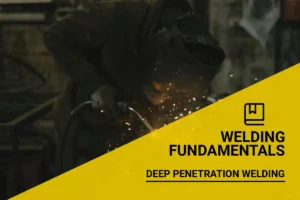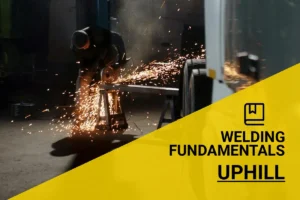How to Break a Weld? Steps, Methods, and Tips for Success
Published on: June 18, 2025 | Last modified: March 4, 2025
By: Joe Carter
A break in welding refers to the separation or failure of a welded joint. It’s a critical aspect of welding work that can determine the quality and longevity of the structure.
It’s a question I’m often asked: how to break a weld? Understanding how to break a weld is crucial. In my experience, knowing how to do this safely and efficiently can save time and prevent damage, especially when dealing with complex projects.
In this guide, I’ll cover various topics like types of breaks in welding, prerequisites for breaking a weld, essential steps involved, necessary precautions, and factors influencing weld breakage. You’ll also find methods for breaking a weld, tips for addressing common problems, and advantages of breaking welds. There’ll be a focus on applications, alternatives, and a FAQ section as well, helping you gain a well-rounded understanding.
Contents
- How to Break A Weld?
- What is Break?
- Types Of Breaks in Welding
- Prerequisites: What Do You Need?
- Steps for Breaking a Weld
- Precautions
- Methods for Breaking a Weld
- Factors Influencing Weld Breakage
- How to Address Common Problems
- Aftercare, Inspection, and Advanced Tips for Breaking a Weld
- Advanced Techniques for Breaking Welds
- Advantages Of Breaking Welds
- Applications You Should Know About
- Are There Any Alternatives to Breaking a Weld?
- Frequently Asked Questions (FAQs)
- Conclusion
- References
How to Break A Weld?
A break occurs when metal pieces separate, which ties to how to break a weld. Heat around 1,500°F (815°C), or chiseling instruments, can help. It’s tricky, needing skill, and common in repairs or scrapping.
What is Break?
The ‘break’ in welding refers to the point where the welded joint fails. This failure can occur due to stress, load, or heat. For example, a good weld typically has a tensile strength ranging from 300 to 1,000 megapascals (Mpa) or 43,500 to 145,000 psi (Pounds Per Square Inch). Understanding the break point helps you grasp the weld’s strength and limitations.
When you’re ready to break a weld, common techniques apply. I’ve often used a hammer or chisel to separate welds, especially on exhaust systems. Remember, breaking a welded joint requires finesse; applying too much force can damage surrounding materials.
I often use this for vehicle repairs, particularly with exhaust issues. Sometimes, you may need to break a weld without a grinder, especially in tight spaces. Trust me, knowing how to efficiently break a tack weld can save you a headache. It’s all about skill and the right approach, so prepare accordingly!
Types Of Breaks in Welding
So, what types of breaks might you encounter when working with welded joints?
Heat Affected Zones
Heat affected zones occur near the weld where the material’s properties change. To break a weld in this zone, apply direct heat or force. Use a torch to heat the area to about 1,000°F (538°C), then bend or pull the weld until it fractures.
The effectiveness of welding processes can often depend on technical factors such as the size of a welding cable.
Cracks
Cracks form due to stress or poor welding techniques. To undo a weld with cracks, focus on the ends of the cracks. Apply a hammer or chisel along the crack lines while the material’s still hot; this will weaken and break the weld more easily.
Defects
Defects are imperfections like pores or inclusions that weaken the joint. To break this type of weld, use a welding grinder or a spot weld cutter on the defective area. Ensure you wear protective gear and grind to effectively remove the defects. Crater cracks can also compromise weld integrity, and understanding what causes these cracks can help prevent them.
Separation Points
Separation points are where the metal parts connect. To break a weld at these points, use an angle grinder. Grind along the weld bead until you see the metal separate.
Joint Failures
Joint failures occur when the entire weld joint gives way under stress. To address this, use a pulling machine or a strong crowbar. Apply even pressure until the joint fails and separates completely. You can explore more techniques on how to weld an edge joint.
We have now covered the various types of breaks in welding. Next, we will examine the necessary prerequisites for welding.
Prerequisites: What Do You Need?
What do you need to break a weld?
- Weld Removal Tool: You’ll need a specialized tool, like the Miller Weld Removal Tool. It makes removing welds easier and safer.
- Spot Weld Cutter: A spot weld cutter, such as the Irwin 1/2-Inch Spot Weld Cutter, effectively cuts through welds without damaging surrounding metal.
- Angle Grinder: An angle grinder, like the DEWALT DWE402, is essential for grinding and smoothing surfaces after breaking a weld.
- Heat Gun: A heat gun, such as the Genesis GHG1500A, helps soften some welds, making them easier to break without excessive force.
We have now covered the necessary prerequisites for welding. Next, we will examine the steps for breaking a weld.
Steps for Breaking a Weld
Here are steps for breaking a weld easily. Follow these closely for the best results.
Identify the Weld Type
First, identify the type of weld. Common types include MIG, TIG, and stick welds. Each type requires a different approach—MIG uses a wire feed, while TIG often uses a filler rod. Knowing the weld type helps you decide whether to apply heat or mechanical force.
I’ve seen many misjudge the weld type, wasting effort. Choosing the right method can save time and frustration. For example, breaking a tack weld is faster than breaking a full joint. If it’s a fillet weld, expect a tougher job. Understanding the proper setup techniques can greatly enhance your welding efficiency, and you can learn to set up a Lincoln Electric welder for optimal results.
Apply Heat
Next, heat the weld area with a torch. Use a propane torch for most steel welds, operating around 1,300 °C (2,370 °F). This heat causes the metal to expand, weakening the weld. Apply heat directly to the weld for about 30 seconds to start breaking down the joint structure.
In my experience, don’t rush the heating. Even heating speeds up breakage. If you’re dealing with aluminum, use an oxy-acetylene torch for better results. Just remember, get it hot but not glowing!
Apply Mechanical Force
Now, use a hammer or chisel to break the weld. Strike the weld perpendicularly with firm blows. Apply this force after heating for best results. Be precise; errant hits can damage surrounding material or tools. Understanding the intricacies of electrode classification can aid in choosing the appropriate welding technique for specific materials. Learn more about electrode classification E316-16.
I’ve found a 2-3 lb (0.9-1.4 Kg) hammer works best for most situations. Use a chisel with a sharp edge for cramped spaces. If a joint doesn’t budge after a few strikes, apply more heat and try again.
Use a Spot Weld Cutter
If the weld is still strong, grab a spot weld cutter. These tools fit snugly over the weld and remove metal precisely. Drill at about 1,200 RPM for smooth cutting. Always clear away debris to keep the area clean and visible.
When it becomes necessary to undo a weld, choosing the right method can be crucial. For a comprehensive understanding of how to remove welds, consider the specific type of weld and material involved.
This method works well for layered metal, minimizing damage. I recommend a cutter that matches the weld’s diameter for the best fit. If you’re working with particularly tough steel, switch to a diamond-tipped cutter for better results. Mastering the techniques for welding delicate materials demands specific tools and careful handling, which are essential when learning how to weld thin metal.
Inspect Resulting Breaks
Finally, evaluate the breaks you’ve made. Check if the weld has completely separated. Some joints might need repeated efforts, especially if they’re thick or heavily adhered. Thoroughness is key; don’t leave stubborn bits, as they can cause issues later.
Take a close look for any remaining material. You might need more heat or force depending on the wear. It’s essential to aim for clean breaks for a smoother new weld later on. Remember, practice makes perfect when mastering the best techniques!
We covered the steps involved in breaking a weld. Next, we will cover important precautions to consider.

Precautions
Here are important safety tips for breaking a weld.
- Protective Gear: Wear gloves, goggles, and a face shield, like the 3M Georgia Lens, for eye protection. Don’t risk splatter injuries.
- Ventilation: Ensure proper airflow to avoid harmful fumes. Use a fan or a 3M respirator to keep your lungs safe.
- Fire Safety: Keep a fire extinguisher rated 10B:C nearby to manage sparks and heat sources.
- First Aid Kit: Have a well-stocked kit ready, including antiseptics and bandages. Accidents happen, so be prepared!
Always prioritize safety; your well-being matters.
So far we covered safety measures. Next, let’s look at techniques for dismantling a weld.
Methods for Breaking a Weld
Let’s explore methods to break a weld, including thermal breakdown, mechanical force, chemical methods, vibration techniques, and cutting methods.
Thermal Breakdown
This method uses heat to weaken the weld. Tools like propane torches can raise the metal’s temperature to over 1,300°C (2,372°F), causing the weld to expand and crack. Be cautious; this method can damage adjacent materials.
Mechanical Force
Applying physical force can break a weld. Use hammers or chisels to strike or pry apart welded joints. For tack welds, a firm twist can pop them loose, making this a quick way to separate pieces.
Chemical Methods
This approach involves using chemicals to dissolve the weld. Products containing hydrochloric acid can effectively break down many types of welding materials. Always wear protective gear.
Vibration Techniques
Vibration can help loosen a weld. Tools like angle grinders or rotary vibrators induce oscillations that weaken the bond. This method is especially useful for stubborn joints.
Cutting Methods
You can cut into the weld using plasma cutters or saws. A plasma cutter can reach temperatures of up to 20,000°C (36,032°F), effectively melting through the metal. It’s often the cleanest way to break a welded joint without excessive damage.
Factors Influencing Weld Breakage
What factors influence how easily a weld can break?
Material Type
Different metals respond to stress differently. For instance, steel has a tensile strength of about 400–550 MPa (Megapascals), while aluminum’s is around 90–505 MPa. If the weld joins dissimilar metals, like aluminum and steel, breaking the weld becomes trickier due to their mechanical incompatibility.
Weld Quality
A high-quality weld is smooth and consistent. Poor penetration or excessive spatter can create weak points, making it easier to break the joint. For example, a weld with less than 70% penetration is vulnerable to failure under stress. Ensuring you use the right equipment is crucial, and you might wonder if a 220 welder can be converted to 110 for different power needs.
Heat Application
Heat plays a crucial role. Too much heat can alter the weld’s microstructure, making it brittle. An incorrect heat setting can lower the melting point, affecting the force needed to break a welded joint.
Joint Design
Joint design affects weld strength significantly. For example, a butt joint typically handles more stress than a lap joint. A proper design ensures the stress applied during usage is evenly distributed, reducing the chances of weld breakage.
Environmental Conditions
External conditions like temperature and humidity can weaken welds. For instance, high humidity can lead to corrosion, reducing material strength. A weld exposed to varying temperatures may expand and contract, increasing the risk of breakage.
How to Address Common Problems
Let’s look at specific issues when breaking a weld.
Incomplete Breakage
With incomplete breakage, the joint may not separate fully. You can identify this by checking for stubborn sections that remain intact. Use a chisel or pry bar to complete the separation process.
Cracking During Process
When the break shows cracking, it often indicates excessive heat. I’ve experienced this; watch for heat discoloration on the metal. Cool the area slowly or adjust the torch settings to reduce stress.
Tool Damage
Tool damage can occur if the break is too tough. Look for worn or broken tools; you’re not getting optimal performance. Replace any damaged tools you find.
Heat Control Issues
Heat control issues often complicate breaking the weld. If the material warps or sizzles, there’s too much heat. Use a lower setting on your torch and add water for better control.
Inadequate Preparation
Inadequate preparation leads to complications during the break. Failure to clean properly can keep materials stuck. Always clean the joint well before attempting to break it.
Aftercare, Inspection, and Advanced Tips for Breaking a Weld
Here’s final guidance to ensure your break goes smoothly and safely.
Aftercare Tips
After breaking the welded joint, cool the metal carefully. Use water (27 °C or 80 °F) to avoid thermal shock, which can crack metal alloys. Clean the area with a strong solvent like acetone to prevent debris from interfering with further work.
Inspection Techniques
Inspect the fracture surface closely with a magnifying tool, like a 10x loupe. Look for hairline cracks or imperfections. I’ve found the DEWALT DWAT86131 inspection mirror useful for this. Subtle flaws can harm structural integrity.
Expert Tips
Experienced welders can use vibration strategically to break stubborn welds. A frequency of 60 to 90 Hz works best, shaking off tough bonds. Also, using a hydraulic press can significantly increase your breaking power—over 50 kN (11,200 Lbf) if done correctly.
Advanced Techniques for Breaking Welds
Looking for more ways to efficiently break a weld? Let’s dive into some advanced techniques that can save you time and improve your results.
Vibration Breaking Techniques
Using vibrations can be an effective way to break stubborn welds. Here’s a simple breakdown:
| Technique | Description | Recommended Tools |
|---|---|---|
| Mechanical Vibrators | These devices produce high-frequency vibrations that weaken the bond of the weld. | Industrial vibrators (60-90 Hz) |
| Hammer Vibrations | Using a hammer with quick, rapid blows induces vibrations at the weld joint. | Ball peen hammer (1-2 lb or 0.45-0.9 Kg) |
| Rotational Tools | Rotary tools can create oscillations while cutting, helping to loosen the weld. | Dremel tool or rotary cutter |
Hydraulic Press Method
A hydraulic press can apply significant force to break welds effectively. Here’s what to keep in mind:
- Force Generated: Typically exceeds 50 kN (11,200 lbf), breaking tough joints.
- Application: Align the parts properly to avoid misalignment during the process.
- Speed: Slow and steady application of force works best to prevent sudden failures.
Cooling Techniques
Sometimes, cooling can help. Rapid cooling on a hot weld can create stress and lead to breakage.
- Cold Water Method: Applying cold water can shock the weld, causing it to crack.
- Dry Ice: Placing dry ice around the weld area produces a rapid temperature drop.
Advantages Of Breaking Welds
The main benefit of knowing how to break a weld is that it saves time and effort during repairs. I often used it to fix mishaps or adjust components without starting from scratch.
Additionally, you can prevent damage to surrounding materials, reduce waste, and improve project efficiency. Plus, it allows for easier disassembly, making it more versatile for future modifications.
Applications You Should Know About
I’ve seen people use various methods to break a weld for repairs or upgrades. However, it has many uses, including:
- Automotive Repairs: Breaking a weld on exhaust systems is essential for replacing old parts. This process is popular among car enthusiasts.
- Metal Fabrication: You may need to break a welded joint when modifying frames or structures. This is common in construction and manufacturing.
- Art Restoration: Breaking a tack weld helps restore sculptures without damaging the surrounding metal. Artists and restorers often seek effective techniques for delicate tasks.
- Recycling Materials: Breaking welded metals allows repurposing of old equipment. This method supports sustainability and is increasingly used in metal recycling centers.

Are There Any Alternatives to Breaking a Weld?
Sure, there are some handy alternatives for getting the same result as breaking a weld. You could use a Weld Removal Tool, which specifically targets welded joints without grinding everything down. Let me share an insight I’ve gained over the years: products like the Spot Weld Cutter can save you time and effort, especially when you’re dealing with intricate spots or thin metal.
In some situations, removing aluminum welds requires finesse rather than brute force. In those cases, a combination of heat and cold can work wonders—try applying heat with a torch followed by cooling with water. This method often helps in breaking the bond without excessive damage to the base metal.
Frequently Asked Questions (FAQs)
Here are some questions I typically get asked about welding and breaking welds.
Can a Weld Be Broken?
Yes, a weld can be broken. This is important because certain applications may require disassembly. Techniques like grinding or cutting can effectively break welds. Remember, various methods might apply depending on the weld type and joint, so choose wisely.
What is the Best Tool to Cut Welds With?
The best tool to cut welds with is usually an angle grinder. An angle grinder allows for precise cuts and works well on different materials, making it versatile. For example, you can use a 4.5-inch (115 Mm) grinder with a cutting disc to tackle most welds.
What is the Easiest Way to Break a Spot Weld?
The easiest way to break a spot weld is using a spot weld cutter. This tool is specifically designed to cleanly remove spot welds without damaging the base material. It typically drills into the weld, saving time and effort compared to other methods.
How to Remove Weld From Steel?
You can remove weld from steel using a grinder or a plasma cutter. A grinder works well for thin welds, while plasma cutters excel with thicker materials. Both techniques help restore the steel for reuse or repair, making them cost-effective options.
How Do You Break a Tack Weld?
You can break a tack weld by using a chisel or a hammer. This method applies effectively in situations where a grinder isn’t available. Aim carefully to avoid damaging the surrounding material while loosening the weld.
How to Break Welding Joint?
To break a welding joint, apply methods like heating or mechanical force. Heating the weld can cause expansion and make it easier to separate. Understanding welding fundamentals can help determine the best approach. Whacking the joint after heating can quickly get the job done, depending on the materials used.
Conclusion
Phew, we covered a lot. We talked about what breaking a weld means, various types of breaks in welding, necessary tools, specific steps to break a weld, precautions to take, and effective methods like cutting and hammering. We even looked at factors influencing weld breakage, common problems, and aftercare tips for a successful project.
So, how to break a weld? Simply use methods like cutting with a torch, applying heat, or hammering on it to weaken the joint’s integrity. Remember, the effectiveness of these techniques often depends on the weld material, thickness, and type, so choose wisely for your specific situation.
For a deeper understanding and further insights on welding techniques, be sure to visit What is Welding for more in-depth welding guides and tutorials.
References
- Lincoln Electric. (2020). The Procedure Handbook of Arc Welding (15th ed.). Cleveland, OH: Lincoln Electric Company.
- Weisman, J. (2011). Practical Welding Technology. Boca Raton, FL: CRC Press.
Joe Carter is a retired welding professional with over 40 years of hands-on experience in the industry, spanning ship repair, structural welding, and even underwater projects. Joe is a master of MIG, TIG, and Stick welding. Passionate about mentoring the next generation of welders, Joe now shares his decades of expertise and practical insights to help others build rewarding careers in welding.
Breaking Welds, Construction, Metal Fabrication, Safety Tips, Structural Integrity, Weld Removal Techniques, Welding, Welding Repairs, Welding Safety, Welding Techniques







